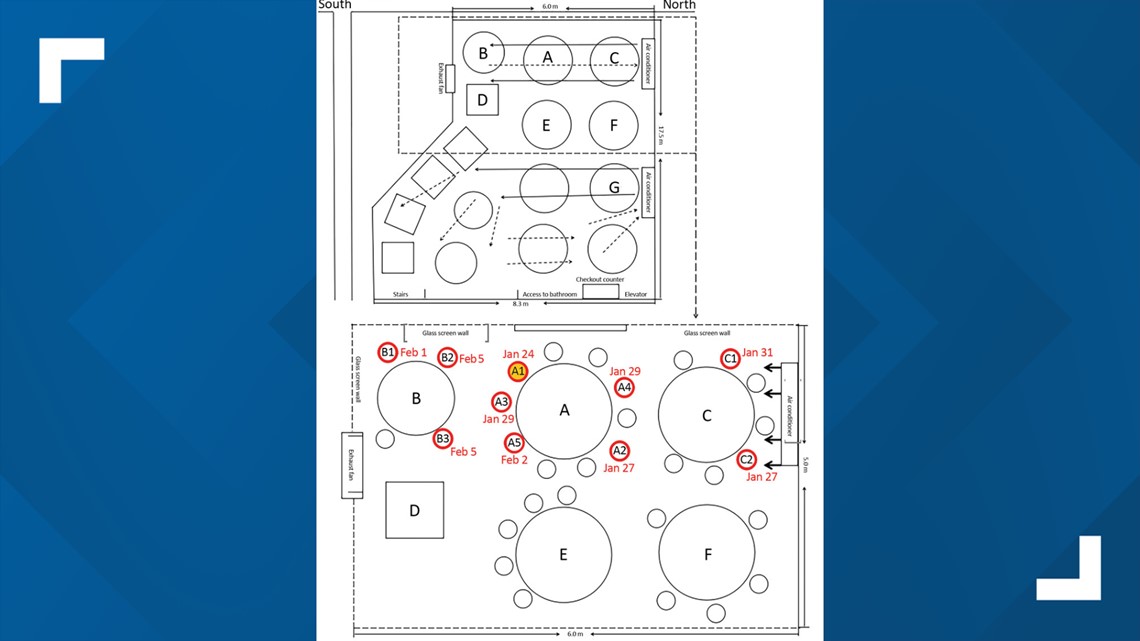GUANGZHOU, Guangdong Province — Researchers in China believe air conditioning inside a restaurant in Guangzhou, China, may have played a part in spreading COVID-19 from one person, who wasn't feeling sick, to nine others.
The researchers detailed their findings in a paper set to be published in July's issue of Emerging Infectious Diseases, a journal published by the Centers for Disease Control and Prevention.
The study highlights some of the challenges that businesses might face when they try to reopen once the curve has flattened.
Researchers described how one family, dubbed "Family A" in the study, traveled from Wuhan, China, and had lunch at a windowless five-story restaurant in Guangzhou on January 24. Later in the day, one family member started to feel sick and went to the hospital. They tested positive for the novel coronavirus.
Within two weeks, nine other people, including four more members of "Family A," and five people from two other tables had also tested positive for COVID-19.
It's important to note that of the 83 customers at the restaurant on the same floor that same day, 73 of them did not get sick. The eight employees working on the same floor also didn't get sick.
The researchers concluded the members of "Family A" could have been infected outside of the restaurant by their relative who showed symptoms later in the day. But for the other five people at nearby tables, the restaurant appears to be where they were infected.
The researchers believe droplets from the first person to show symptoms in "Family A" were likely blown by the air conditioning unit toward "Family B," then bounced off the wall, back in the direction of the third family. No one else besides individuals sitting in the path of the AC unit became sick.


Since the coronavirus wasn't too widespread beyond Wuhan at the time of this incident, public health officials were able to track where individuals contacted it. The other 73 restaurant-goers were quarantined for 14 days and never developed symptoms, researchers explained.
"From our examination of the potential routes of transmission, we concluded that the most likely cause of this outbreak was droplet transmission," the researchers wrote. "We conclude that in this outbreak, droplet transmission was prompted by air-conditioned ventilation. The key factor for infection was the direction of the airflow."
However, the study had its limitations. Researchers did not "conduct an experimental study simulating the airborne transmission route" nor test sample–negative asymptomatic family members and other diners to estimate risk for infection.
"To prevent spread of COVID-19 in restaurants, we recommend strengthening temperature-monitoring surveillance, increasing the distance between tables, and improving ventilation," the study authors wrote.

